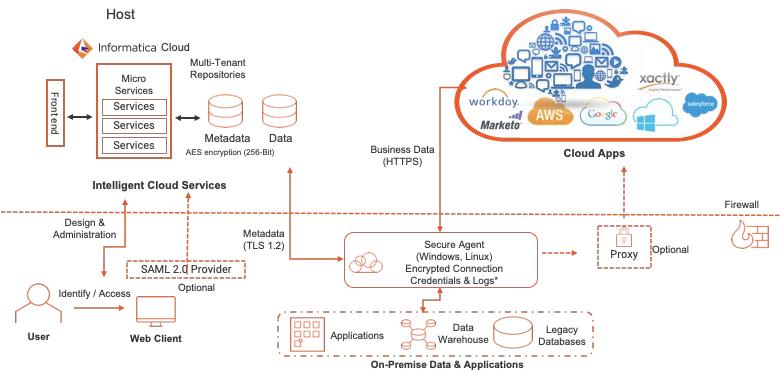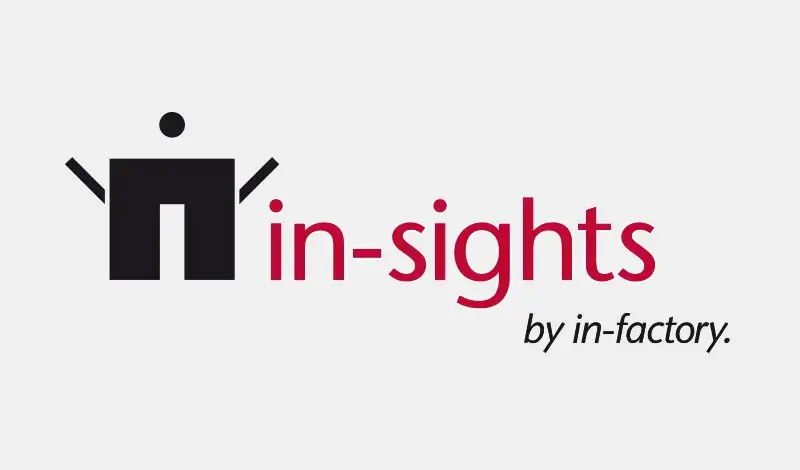1. where does the integration service run - in the cloud or locally? What is a hybrid solution?
The actual user data (database content, flat files) is not sent to the Informatica Cloud. All user data is received and processed via the Secure Agent, which is installed locally in most cases.
There is only an exchange of metadata (comparable to a PowerCenter repository). The exchange of metadata is encrypted.
The Secure Agent is responsible for processing the actual user data, i.e. all processes (Data Integration Service, Process Engine etc.) are executed on the Secure Agent host. For this reason, the Secure Agent must be equipped with appropriate hardware. A comparison can be made here with a PowerCenter Server.
As the Secure Agent is usually installed locally, certain data such as flat files are still stored locally. This is also referred to as a hybrid solution, as data is still stored locally, but the logic is always stored in the cloud.
2. is it possible to query the metadata (Informatica views)?
Compared to a PowerCenter or domain repository, the repository metadata cannot be accessed directly, i.e. metadata can only be queried to a limited extent via the IICS Rest API.
It should also be mentioned here that there is no backup functionality; the assets (mapping, tasks, etc.) must be exported.
3. what effect does it have on performance if the repository is in the cloud and the data, or the secure agent, is local?
Informatica Cloud Services can be hosted on different servers, i.e. the network latency between Secure Agent and IICS Host plays a major role here. The distance between Secure Agent and IICS Host should be as short as possible.
The network latency between the Secure Agent and the source also plays a role when considering performance.
4. is there a Push Down Optimization option?
As in PowerCenter, PushDownOptimization (PDO) can be used for certain types of mappings.
5. are all PowerCenter transformations supported? Are the reusable transformations supported?
It is important to note that there are still transformations within PowerCenter that cannot be used in IICS.
A complete list cannot be found in the Informatica network, but reusable transformations, for example, cannot be used: https://knowledge.informatica.com/s/article/630465?language=en_US&type=external
In addition to the option of exporting and importing using the "PC to Cloud conversion" tool, it is also possible to use a PowerCenter task in IICS.
However, this has the disadvantage that the customer needs a license for both IICS and PowerCenter, as no changes can be made to a PowerCenter task within IICS.
6. is the partitioning of WFs supported?
Yes, similar to PowerCenter.
7. are the parameter files used?
Parameter files can be used in the same way as in PowerCenter. As in PowerCenter, a distinction is made here between global and local parameters.

Overview Informatica Cloud Architecture
8. does PMCMD exist?
IICS does not use command line tools such as pmcmd etc. There is only the RunAJobCli application, which can be used to execute jobs.
In addition, queries can be called up via the REST API.
9. is the migration of mappings/workflows from PowerCenter to IICS automated?
There is currently no automated process that allows existing PowerCenter workflows to be migrated 1 to 1 to IICS.
At the moment, the PowerCenter workflows have to be exported and imported into IICS.
10. which scheduling tool can be used with IICS? Is it possible to integrate with Control-M (Control-M WebService that supports IICS)?
IICS offers rudimentary functionalities for scheduling jobs.
External applications can use the RunaJobCli tool or the Rest API.
There is currently no Control-M plugin.
11 Which and how many ports need to be opened for communication with the cloud?
Which ports and how many ports need to be enabled depends on the server in question as well as the services used.
In addition to the ports for the cloud, the ports for the corresponding applications, e.g. database ports, must of course also be enabled.
The Secure Agent must have a direct connection to the Internet, as it always communicates with the cloud.
12. is the data transmitted in encrypted form?
The data between Secure Agent and the cloud is encrypted (TLS 1.2), as is the connection to external cloud application services via HTTPS.
Passwords to relational applications such as databases are also encrypted.
In the case of a locally hosted Secure Agent, the connections can be additionally configured with higher security measures, for example.
13. what happens in the event of network interruptions/failures? Are there parameters that "bridge" interruptions?
The Secure Agent is in constant contact with the cloud and behaves identically to the PowerCenter Client.
There are parameters at both Secure Agent and service level that can be increased in order to bridge short-term network interruptions.
